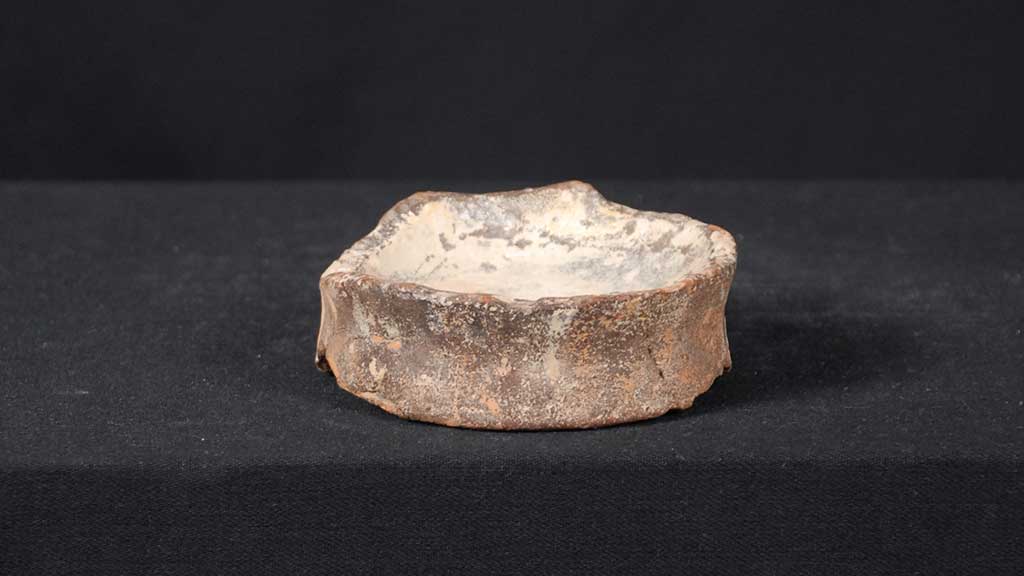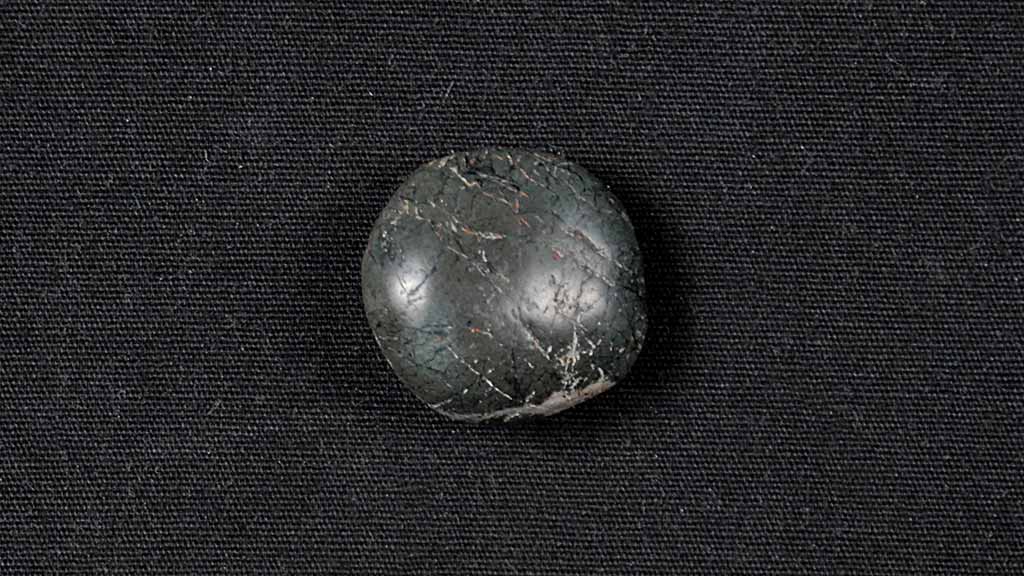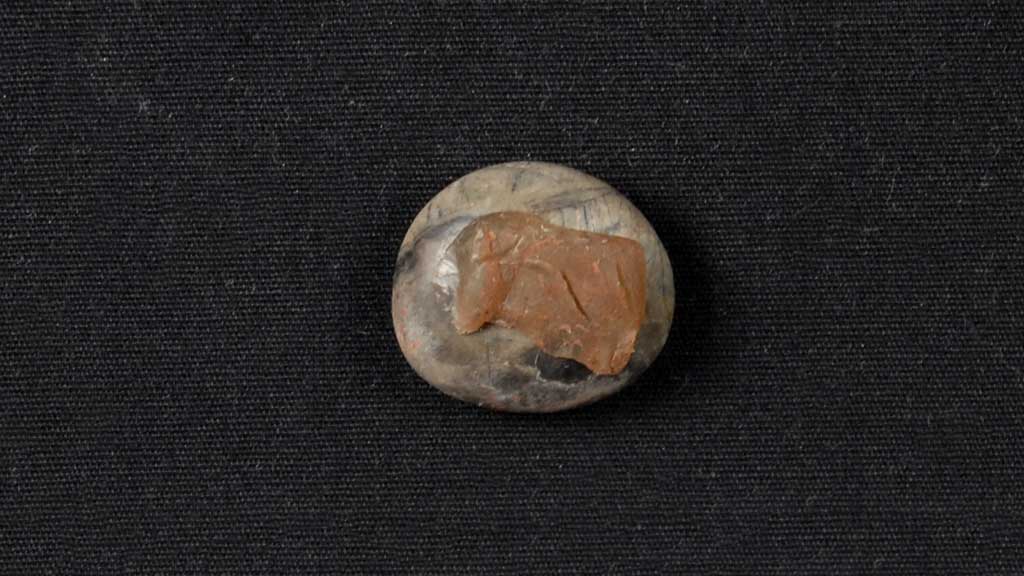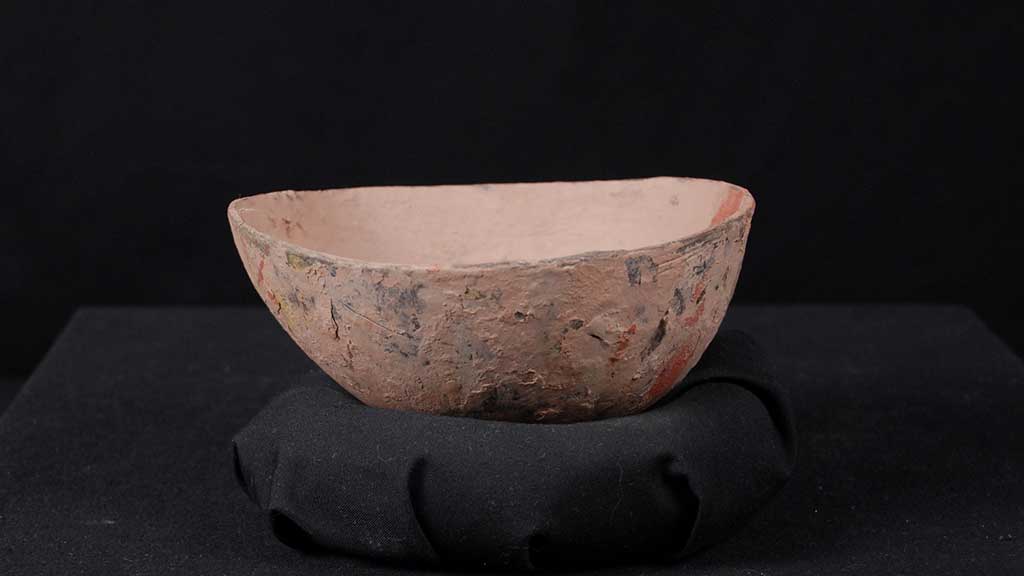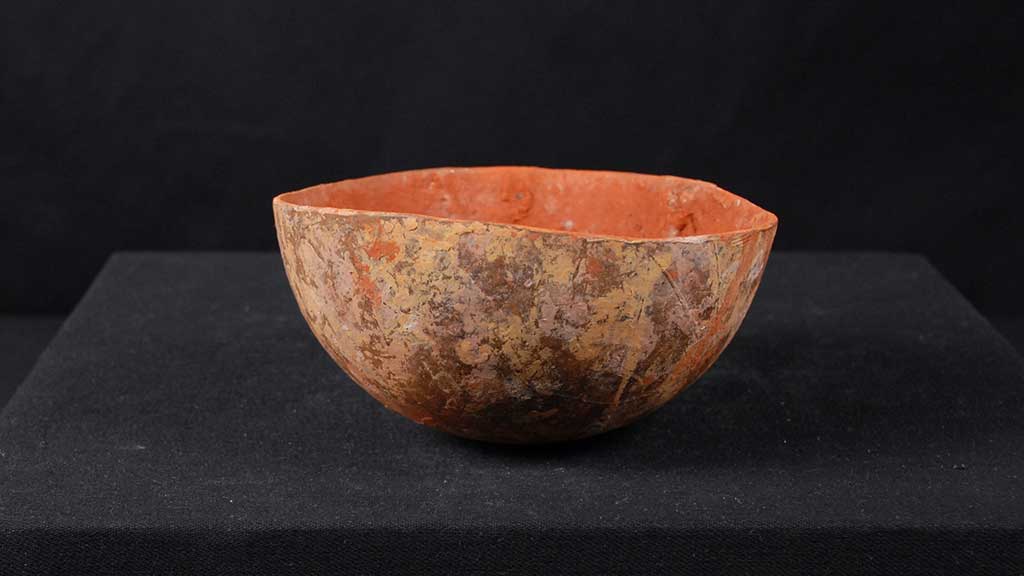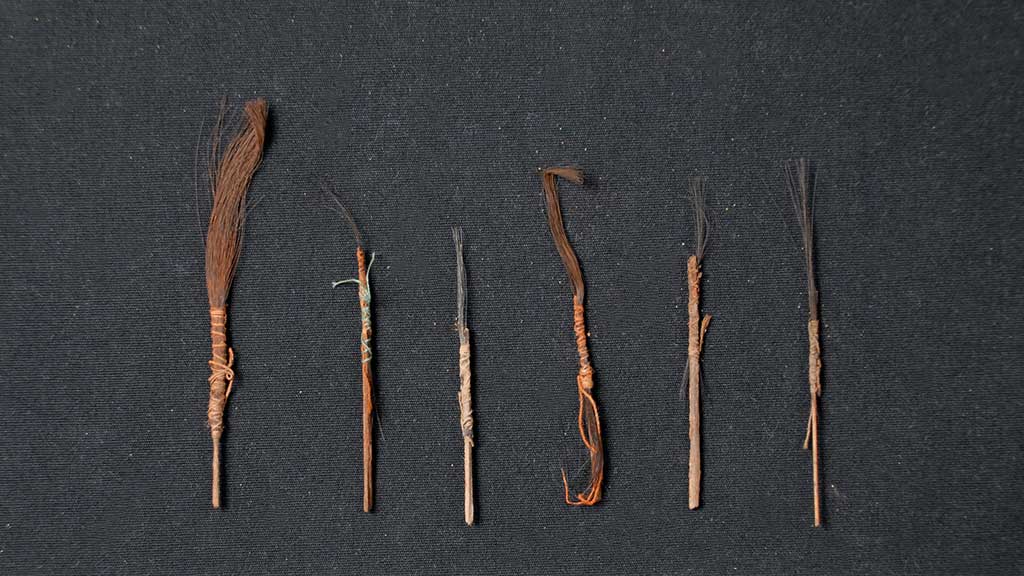
Looking at Women’s Work on International Women’s Day
- Post Date: 3/8/2017
- Author: Amy Heggemeyer
- Reading Time: 3 minute read
International Women’s Day acknowledges and celebrates the work, paid and unpaid, that women do every day to support and sustain their communities. Artifacts made and used by women in their many arenas of work are essential to a world cultures collection.
Let’s take a look at some of the storage items and tools from across the museum collections. These objects tell of women’s tasks in a particular community at a particular time. They document and enable the physical labor of women and the importance of that labor toward the overall well-being of their community.
Baskets
-
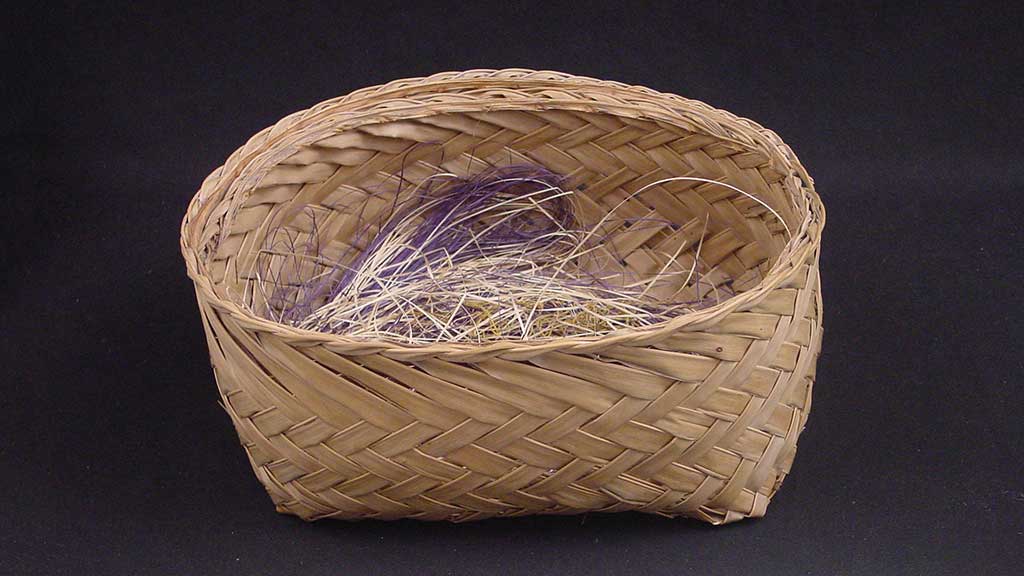 Hapeias, Work Basket
Hapeias, Work BasketCollected in 1963, this basket was used by women on Lamotrek, located in the Caroline Islands of the Federated States of Micronesia. It held banana and hibiscus fiber for weaving into cloth. At the time of collection, women prepared natural fibers for weaving into garments, mats, and thatch. They clothed the community, provided a place for sleeping, and literally made the roof for their homes.
Lamotrek Island of the Yap Islands in the Caroline Islands 1963 from the William H. Alkire Collection, Transfer from Department of Anthropology, UIUC 2000.01.0456B -
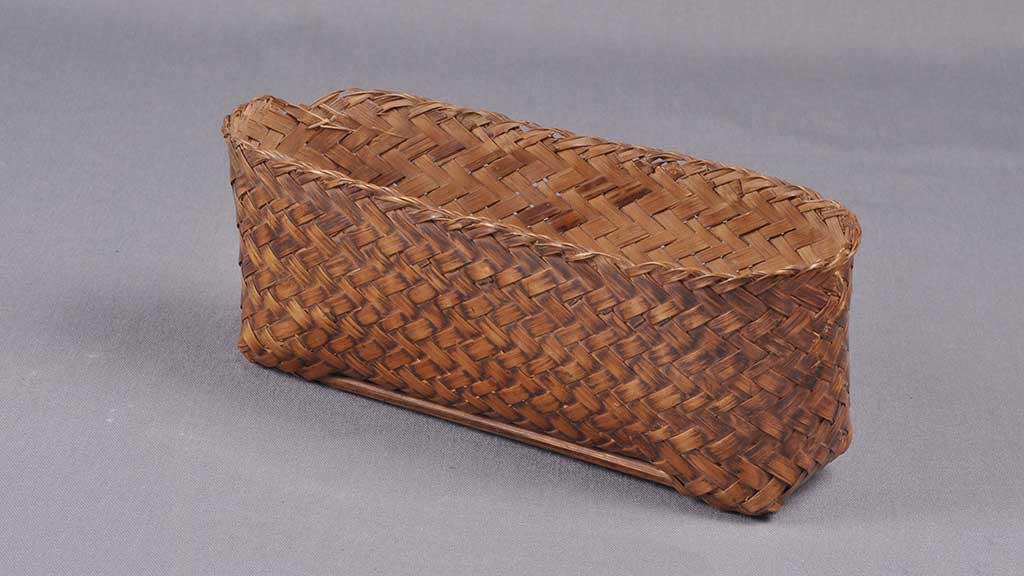 Lahu Storage Basket
Lahu Storage BasketCollected in the mid-1990s in Thailand, woven baskets such as these are used by Lahu women to store sewing materials. The small bamboo rods along the top and bottom provide stability. This type of basket can also be used to store cooked rice. This basket speaks to the role of Lahu women providing clothing and food for their family.
Northeast Thailand 1993–1997 from the Kieffer-Lopez Collection 2010.01.0107A
Bowls
-
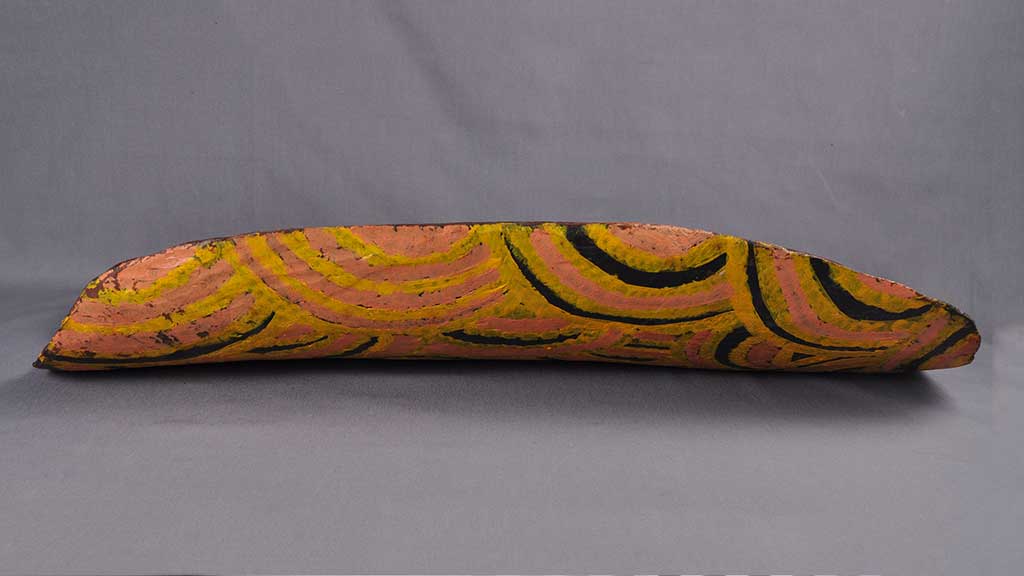 Piti, Carrying or Collecting Bowl
Piti, Carrying or Collecting BowlThis is a contemporary example of a traditional carrying bowl used by Anangu Pitjantjatjara women in South Australia. Called a piti, it is carried by women who are out hunting for witchetty grubs and honey ants as a food source. They use a smaller version of the piti as a scoop or ladle. This example was made in 2010 by the artist Ivy Laidlaw of the Western Desert community of Irunytju.
Made by Ivy Laidlaw Itunytju/Wingellina, Western Desert Australia 2008 from the Kieffer-Lopez Collection 2011.05.0004
Pottery
Spurlock has a large collection of Canelos Quichua pottery, which is made by women of this indigenous community in Ecuador. This work is valued in the community for the functional and ceremonial significance of their work, as well as providing a source of income through the tourist market.
-
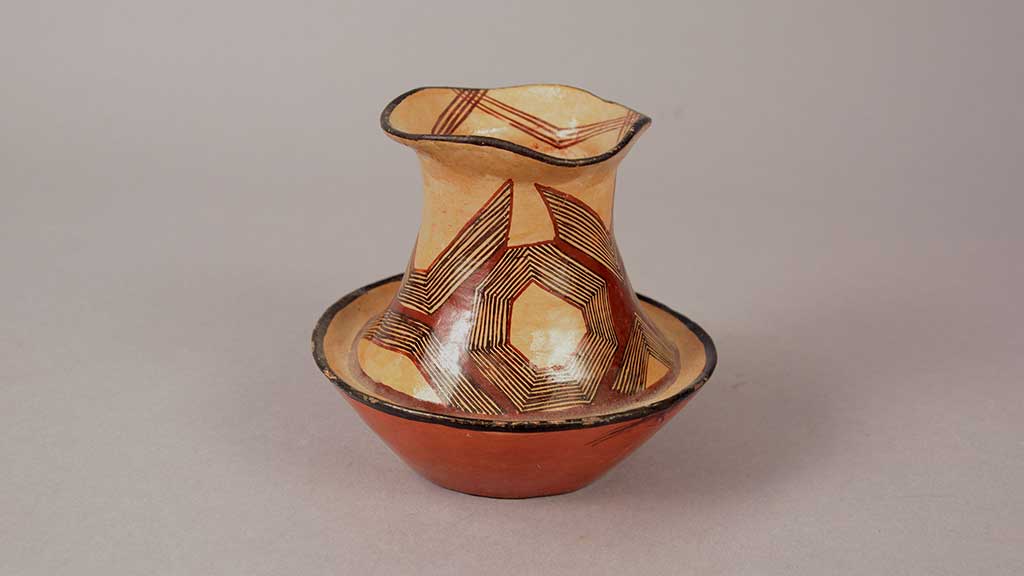 Sicuanga Manga, Sicu Papa Tuber Jar
Sicuanga Manga, Sicu Papa Tuber JarThis jar is an example of pottery made both for and by Canelos Quichua women. Called a Sicuanga manga, “toucan bowl,” it is used to store objects special to an individual woman. These special objects could be feathers and seeds used for ornamentation or special stones that are used for burnishing pottery or are believed to make manioc grow. The toucan bowl would be hidden within the house, usually by tying it to the rafters of the roof.
by Rosa Gualinga, Canelos Quichua artist Puyo or Montalvo, Ecuador 1985–1987 2016.09.0009
Pottery Tools
Pictured here is a selection of pottery tools from our collection, which includes brushes, pigments, burnishing stones, and resin. The items pictured were used by Canelos Quichua artists Delicia Dagua and Estela Dagua in the early 1980s and are a gift of Norman and Dorothea Whitten.
-
- Share:
- Subscribe to Newletter
- Giving
